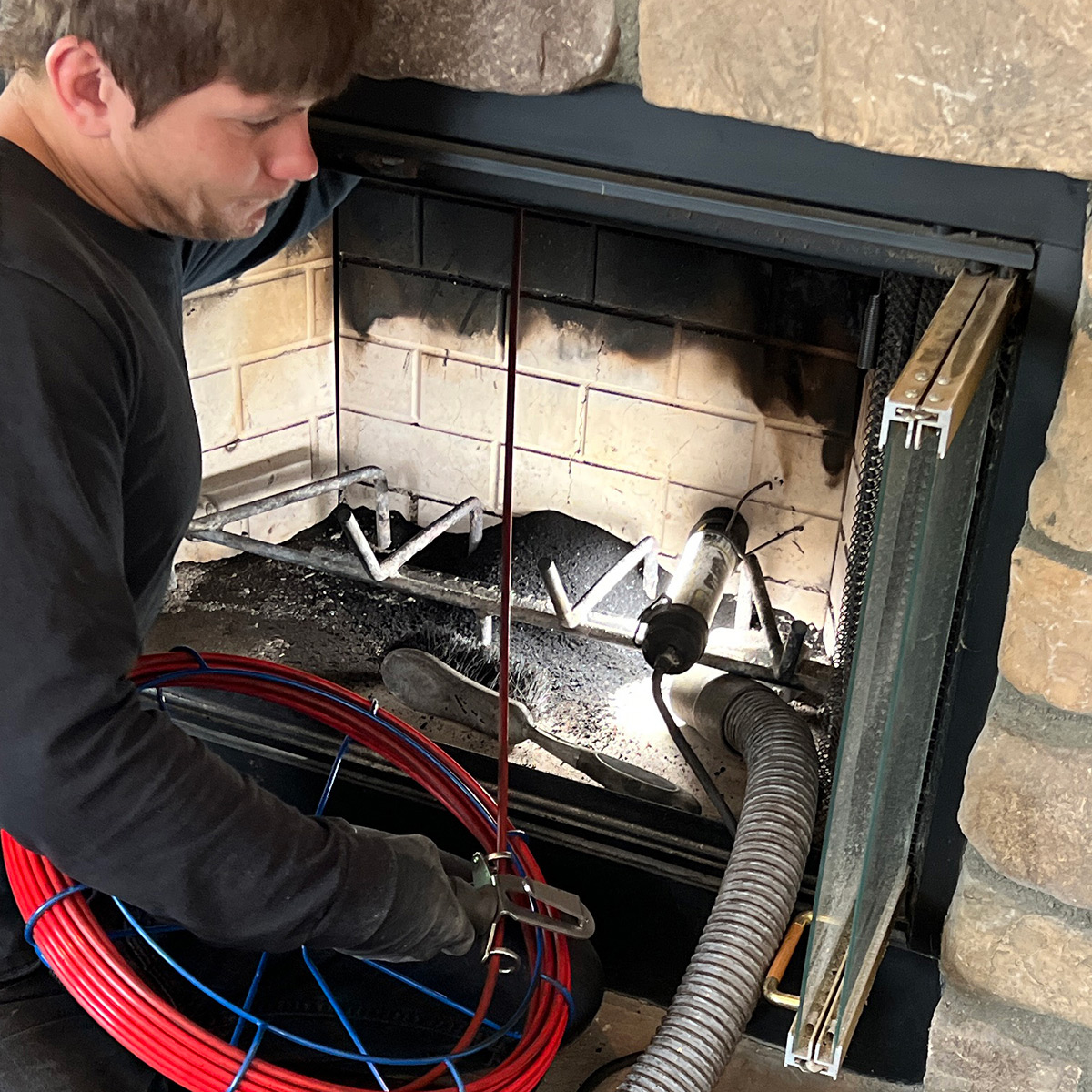The Full Chimney Sweep San Jose Checklist for Year-round Safety
The Full Chimney Sweep San Jose Checklist for Year-round Safety
Blog Article
The Ultimate Smokeshaft Cleaning Checklist for Homeowners
A well-kept chimney not just boosts the overall functioning of your heating system however also reduces the threat of potential threats such as fires and carbon monoxide leakages. Chimney Sweep San Jose. From evaluating the smokeshaft framework to eliminating creosote accumulation, each step plays a crucial duty in securing your home and liked ones.
Chimney Inspection and Evaluation
The interior of the chimney ought to be examined for any kind of obstructions, such as bird nests or excess soot, which can posture a fire threat. Inspecting the flue for creosote buildup is important as this very flammable compound can trigger a smokeshaft and stir up fire.

Outside Maintenance and Fixes
Evaluating the outside of the chimney for any kind of structural issues, such as fractures, loosened bricks, or signs of water damages, is crucial in making certain the general security and longevity of the smokeshaft. Consistently inspecting for any kind of splits in the mortar or bricks can help stop water from permeating in and creating damage to the smokeshaft structure. Resolving these outside upkeep problems in a prompt manner can lengthen the life of your chimney and prevent pricey repair work down the line.
Cleansing the Smokeshaft Flue and Damper
To make sure appropriate functioning and safety and security of your chimney, routine cleansing of the chimney flue and damper is crucial. The chimney flue is the flow that permits smoke and gases to leave your home, while the damper is a movable plate that manages air movement. Begin by checking the flue for any kind of obstructions such as bird nests, particles, or creosote buildup. Make use of a flashlight to check for any kind of indications of damage or blockages. Next, meticulously remove any kind of particles using a chimney brush or vacuum created for this objective. Ensure that the damper opens up and closes smoothly, as an appropriately operating damper helps regulate airflow and stops drafts when the smokeshaft is not being used. Additionally, take into consideration setting up a smokeshaft cap to avoid debris and animals from going into the flue. Normal maintenance of Check Out Your URL the chimney flue and damper not only improves the effectiveness of your smokeshaft yet also reduces the danger of chimney fires and carbon monoxide buildup in your home.
Removing Creosote Buildup Safely
Just how can home owners securely eliminate creosote accumulation from their chimney to maintain its optimum performance and safety and security? Creosote, a result of shedding wood, can accumulate in smokeshafts over time, positioning a fire risk otherwise appropriately handled. To securely get rid of creosote accumulation, beginning by ensuring the smokeshaft is great and there are no sticking around cinders. Use a flashlight to evaluate the interior of the chimney for creosote down payments.
There are different methods to get rid useful source of creosote, relying on the buildup's intensity. For light creosote build-up, utilizing a chimney brush or a homemade creosote eliminator made of equivalent parts water and vinegar can be reliable (Chimney Sweep San Jose). For thicker deposits, specialist smokeshaft cleaning company might be required
It's crucial to use safety equipment such as gloves, safety glasses, and a mask when handling creosote to stop skin irritability or inhalation. Furthermore, correct ventilation while cleaning up the smokeshaft is important to see this avoid breathing in hazardous fumes. Routine smokeshaft inspections and cleansings can aid stop creosote build-up, making certain the safety and security and effectiveness of your chimney.
Fire Safety Precautions for Chimney Owners
Regular chimney inspections by qualified professionals are critical to recognize any type of blockages, creosote accumulation, or architectural issues that could posture a fire risk. Setting up a smokeshaft cap can prevent particles, animals, and rainwater from getting in the smokeshaft and creating clogs or damage. Furthermore, chimney proprietors ought to have a spark arrestor or chimney stimulate arrester mounted to stop sparks from leaving and possibly igniting nearby combustibles.

Conclusion
By complying with the utmost chimney cleansing list described in this write-up, property owners can evaluate, clean, and fix their chimney properly. Proper upkeep not only lowers the danger of chimney fires but additionally extends the lifespan of the smokeshaft system.
Checking the smokeshaft cap and crown for any damages is crucial to prevent water from seeping right into the chimney and triggering further damage.
Normal maintenance of the smokeshaft flue and damper not just improves the efficiency of your smokeshaft but likewise reduces the risk of chimney fires and carbon monoxide accumulation in your home.
Normal chimney evaluations and cleansings can assist prevent creosote accumulation, making sure the safety and security and efficiency of your chimney. (Chimney Sweep San Jose)
Installing a chimney cap can stop particles, pets, and rainwater from getting in the chimney and triggering obstructions or damages. Appropriate maintenance not just reduces the risk of chimney fires but also lengthens the life-span of the smokeshaft system.
Report this page